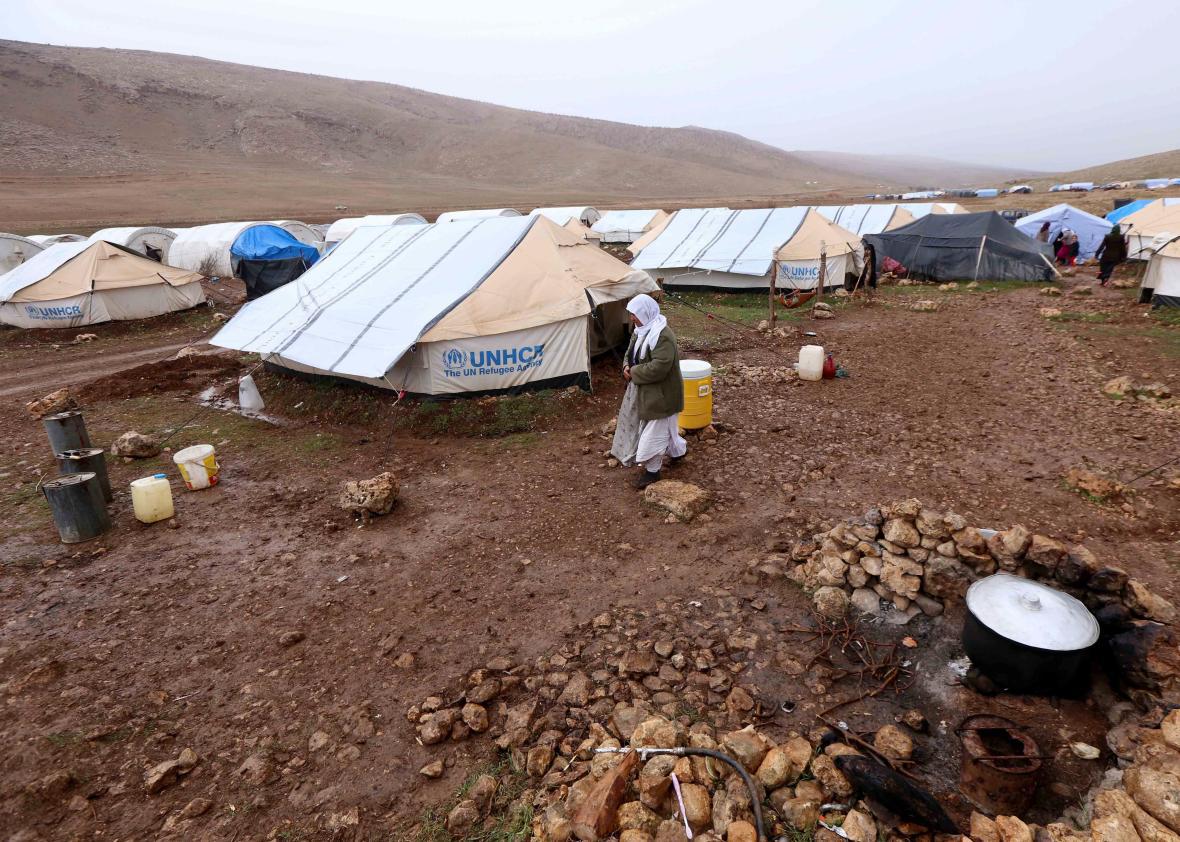An important and horrifying feature by Rukmini Callimachi published today in the New York Times details ISIS’s “theology of rape,” the group’s deliberate and systematic practice of sexually enslaving women and girls from the Yazidi religious minority as it has expanded its territory in Iraq and Syria.
Based on interviews with 21 survivors, the article details how rape “has become deeply enmeshed in the organization and the radical theology of the Islamic State” since the group overran Yazidi territory in 2014. ISIS has created “a network of warehouses where the victims are held, viewing rooms where they are inspected and marketed, and a dedicated fleet of buses used to transport them,” and issued a 34-page how-to manual with guidelines for rape. Its leaders have celebrated sexual assault as “spiritually beneficial, even virtuous.” A 12-year-old escapee, now living with her family in an Iraqi refugee camp, describes how an ISIS fighter would pray before and after raping her and explain that the Quran gave him the right to do so.
The deliberateness of ISIS’s system of sex slavery is unusually horrendous, but unfortunately ISIS is not the only armed group in the world today systematically using rape in warfare. It’s not even the only one in Syria: The rape of female prisoners is believed to be widespread in Bashar al-Assad’s prisons. Widespread, systemic rape has been a brutal part of modern conflicts in Africa, Europe, Latin America, and Asia and has been carried out by state and nonstate actors of every nationality and ideology.
In recent years, there’s been a growing global awareness of rape in conflict, with the U.N. warning that the practice is becoming increasingly routine. Some recent scholarship, however, has challenged that notion, and other prevalent ideas about rape in war. For one thing, rape is not—as it’s often viewed—an inevitable consequence of armed conflict. Harvard political scientist Dara Kay Cohen developed a data set of rape in warfare for 86 civil wars between 1980 and 2009, finding only 18 had widespread or “systematic” levels of rape, and “numerous” reports in 35. A separate survey of conflicts in Africa by the Peace Research Institute of Oslo found that of 236 armed groups between 1989 and 2009, a “majority of the armed actors in African conflicts (72 percent) had no known record of sexual violence,” suggesting that widely publicized examples like the Democratic Republic of the Congo and Sierra Leone are not the norm.
The 2012 Human Security Report, a widely cited annual publication on global conflict, took issue with some other assumptions about sexual violence, arguing that there’s little evidence it’s becoming more prevalent, that men are undercounted as victims, and that more attention should be devoted to the problem of domestic violence and sexual abuse in unstable societies.
None of this is to minimize the problem—as Lauren Wolfe of the Women Under Siege project pointed out after the HSR report was published, even if wartime rape is not as common as we assumed, it’s still far, far too common. But understanding that there are numerous cases where it doesn’t occur is important for understanding why and how it does.
Cohen’s analysis found no evidence that wartime rape is more common in societies with worse levels of gender inequality or in the context of ethnic violence. It is associated with state collapse, suggesting that war may often simply offer an opportunity for would-be rapists who are otherwise constrained by the law and societal norms—something that American soldiers have not been immune from.
There have been well-publicized cases of rape being used deliberately against a civilian population for a strategic goal, such as the ethnic cleansing campaign in Bosnia, but Cohen agues, with numbers to back her up, that often widespread rape, especially gang rape, which is far more common in wartime than peace time, is often less a “weapon” employed against an enemy than a “socialization tool” that enables groups with “forcibly recruited fighters to create bonds of loyalty and esteem from initial circumstances of fear and mistrust.”
All this suggests that ISIS is in fact an outlier. Callimachi argues that for ISIS, sex slavery is an “established recruiting tool to lure men from deeply conservative Muslim societies, where casual sex is taboo and dating is forbidden.” In other words, rape isn’t a way to initiate fighters who’ve been forcibly recruited, as it was in Sierra Leone’s civil war. It’s an advertisement—part of the group’s overall strategy of outreach to potential recruits via wanton public brutality, compounded in this case those recruits attitudes toward sex and gender. And while rape as a tool of genocide may not be the global norm, ethnic cleansing does seem to be one of the motivations for ISIS’s strategy. The article notes that ISIS’s “sex trade appears to be based solely on enslaving women and girls from the Yazidi minority. As yet, there has been no widespread campaign aimed at enslaving women from other religious minorities.”
Sexual violence researcher Elisabeth Wood argued recently that understanding that rape is not simply an inevitable feature of warfare should give us “more grounds for holding accountable those groups that do engage in rape.” In other words, understanding just how much of an outlier ISIS’s rape campaign is in the context of war is crucial for understanding the depths of the group’s cruelty.
